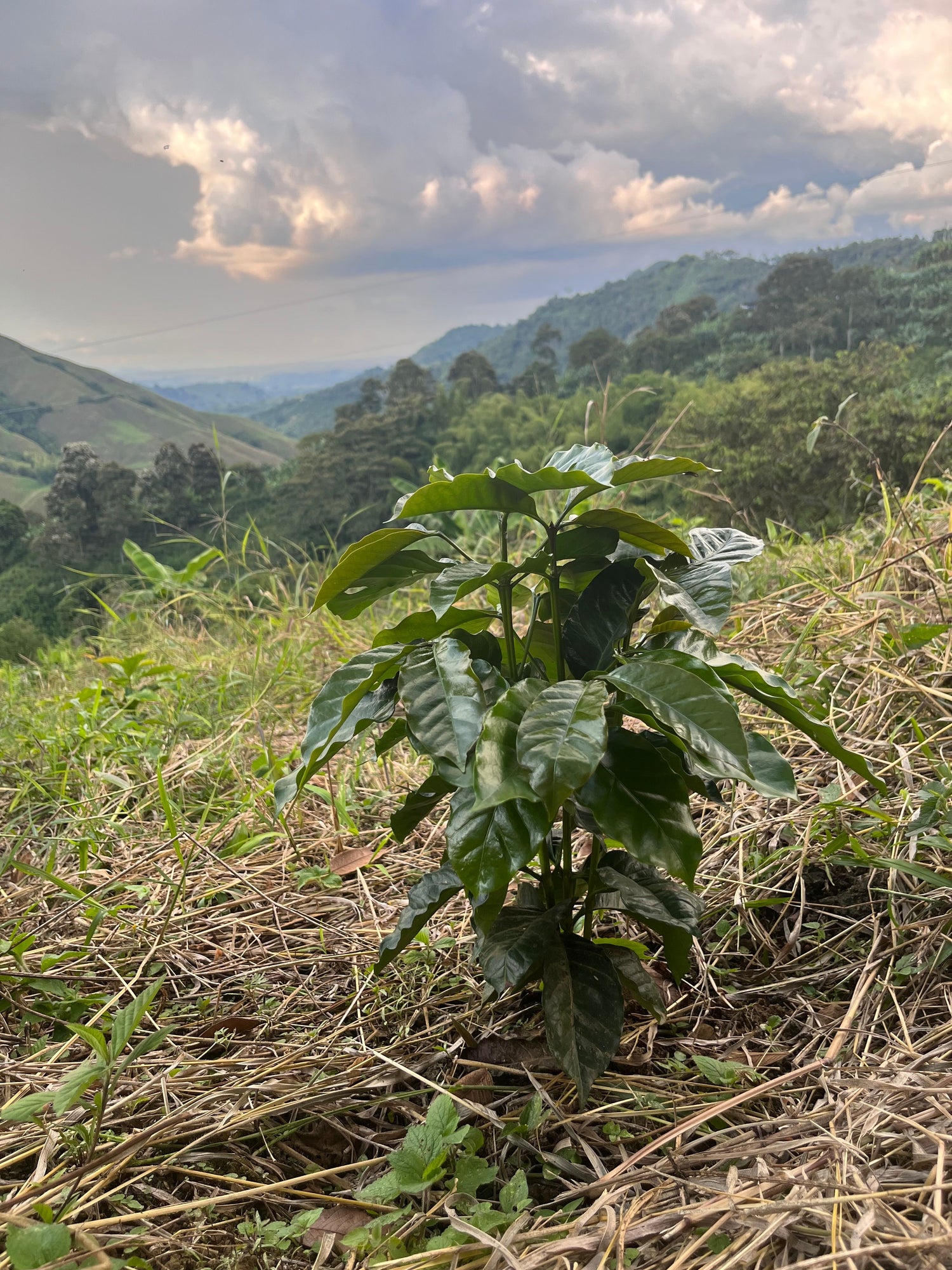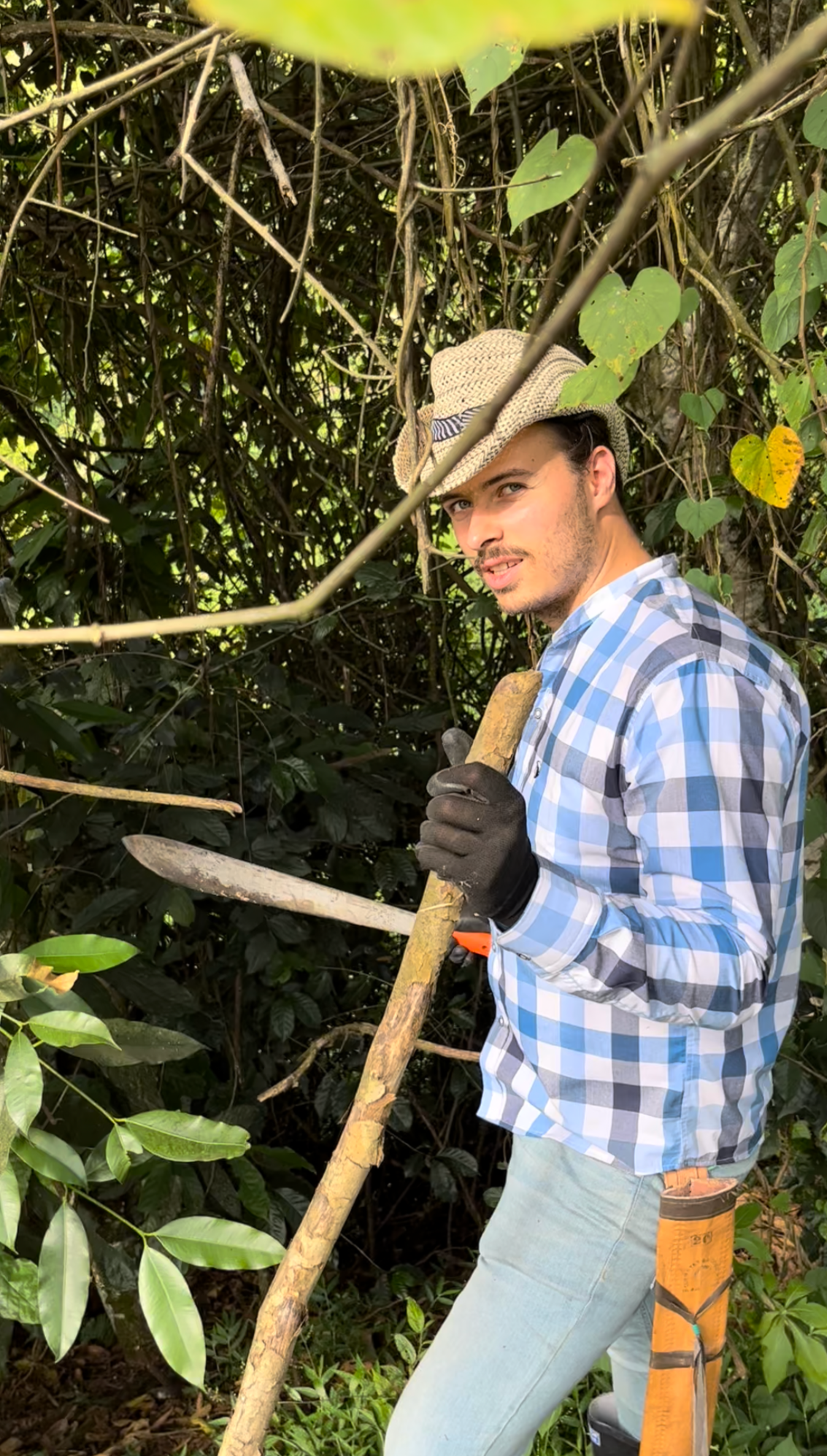Coffee is grown in many different varieties around the world. These are each varieties of one of the two most well-known coffee species:
- Coffea Arabica (called Arabica)
- Coffea Canephora (called Robusta)
Coffee plants thrive best in tropical climates near the equator. The main growing areas are therefore South America, South Asia, Africa, the Caribbean & Central America and also Australia.
But how and when is the coffee actually harvested?
The harvest times of coffee:

There are so-called harvest times for the coffee harvest. A distinction is made between the main and secondary harvest. These differ from region to region and also depending on the current global and regional climate. Depending on these factors, the ripening of the coffee cherries takes different lengths of time, up to 10 months. This is why there is only one coffee harvest per year in most growing areas. The good news: coffee is always harvested somewhere on earth.
Colombia is an interesting example. The country is very diverse in terms of vegetation and climate and therefore produces 4 different harvest seasons:
- In the northeastern areas, the main harvest season in most regions is September-December (light green areas)
- In the central-western areas, the main harvest season in most regions is September-December. However, there is a secondary harvest season from April-May. (red areas)
- In the central eastern areas, the main harvest period in most regions is from March to June. There is also a secondary harvest period from October to November. (orange areas)
- In the southernmost areas on the border with Ecuador, the main harvest period is between March and June. There is no secondary harvest period here. (dark green areas)
This is just the example in Colombia. Globally speaking, this means that at practically any time in the world, a coffee bean harvest is taking place in some region.
You have probably noticed that the harvest periods are quite long.
Why do harvest times take so long?
Coffee cherries ripen at different rates. It can happen that on one branch of a coffee tree
- flowers (still becoming coffee cherries)
- buds (still becoming coffee cherries)
- unripe coffee cherries
- ripe coffee cherries
- overripe coffee cherries
happen.

How is coffee or coffee beans harvested?
There are 3 harvesting methods for coffee beans, which are listed here in descending order of quality:
- picking
- stripping
- Industrial
To answer the question, it is also important to consider the following question:
When are coffee beans harvested? The logical answer: when they are ripe. But there is a problem. As described above, the coffee beans ripen at different times over a long period of time. This has a major impact on the harvesting methods:
“Picking” is the highest quality method. Over the course of the harvest period, the harvest workers regularly search the coffee plants and “pick” out only the ripe cherries one at a time. The unripe cherries remain on the bush and have time to ripen in peace. All of the coffee plants are harvested many times over the course of months during the harvest period. Everything is done by hand. It is easy to imagine how much effort this involves. Especially in the often steep terrain on the mountain slopes of the Colombian Andes, where the coffee grows.
In return, you get the best possible quality of coffee cherries.
When stripping, the tree is less picky and no cherry picking is done. Instead, the time is waited for when most of the cherries are ripe. Then all of the cherries on a branch are stripped by hand. Logically, ripe, unripe and overripe cherries are harvested.
This blend is of inferior quality because all coffee cherries are at different levels of ripeness.
The industrial process is similar to stripping, but with the help of machines. The use of such machines requires flat terrain and monocultures. This process often leaves only the bare branches behind, without leaves or flowers. It is ideal for mass production because it requires the least amount of effort.
However, the coffee harvested in this way is also of the lowest quality.
Conclusion: What is the best harvesting method for coffee?
Those coffee farmers who value their coffee and treat it with love will clearly choose the picking method. It is time-consuming and expensive, but it is the only way to ensure the best possible quality of coffee. In Colombia, due to the geographical location and long-standing tradition, the coffee harvest is usually done by hand. This is one of the reasons why Colombian coffee has such a good reputation and is known for its quality.
However, there is a big problem: the international price pressure on the coffee market. Quality is not paid for, only quantity. This means that more and more farmers have to save money. With fatal consequences for coffee consumers.
How can I be sure that I am buying high-quality coffee beans?
If you want to do something good for yourself with your coffee, you should pay attention to how the coffee was harvested. As we have learned, only the picking process ensures high quality coffee beans. The coffee farmers go over the coffee plantation every day for months and only collect the ripe cherries. An enormous effort, but it's worth it - for you! Knowing how your coffee was harvested is only possible if you really know where exactly your coffee comes from. Simply stating "Colombia" or "Brazil" gives you no information. There are tens of thousands of small coffee plantations in Colombia alone. If the topic of origin is interesting to you, we'll be happy to help you. Take a look at our selection of Colombian coffees and experience what tastes are possible when you drink good coffee from the root! We connect you directly with the country of origin.
As part of our project on the Finca “La Macarena” we will also follow the Colombian tradition of coffee harvesting and choose the picking method. You can find out more about our project here.






